Вершина Нун. Кашмирские Гималаи.
В связи с все возрастающим интересом альпинистов к ранее труднодоступной зоне Джамму и Кашмир, хочу показать краткий отчет Чехословацкой экспедиции 1976 г. о восхождении на вершину Нун.
Вершина Нун, 7135 м.
Отчет появился благодаря Old-Vix, приславшему среди пачечки замечательных книг и альбом об этой экспедиции.
Спасибо.
Вершина Нун, 7135 м.
Отчет появился благодаря Old-Vix, приславшему среди пачечки замечательных книг и альбом об этой экспедиции.
Спасибо.
Фотоальбом экспедиции.
Карта маршрута экспедиции.
Схема района вершины Нун.
Первый взгляд на гору. Слева в. Кун (7085 м.), по центру - Нун (7135 м.).
Конец автодороги. Слева выглядывает в. Кун.
Место ВС, 4950 м.
Ледопад. Справа в. Суми Парбат (5945 м.)
Ледопад по пути к вершине.
По ледопаду.
Вершина Нун с плато (5350 м.)
Ледник изобилует трещинами.
Северо-Зап. стена Нуна. Маршрут восхождения.
Лагерь 2. 6170 м.
Вид с вершины Нун. Вдали - Нанга Парбат.
На вершине!
Это другая экспедиция.
Всем удачи в неизведанных Гималаях!
96
Комментарии:
Войдите на сайт или зарегистрируйтесь, чтобы оставить комментарий
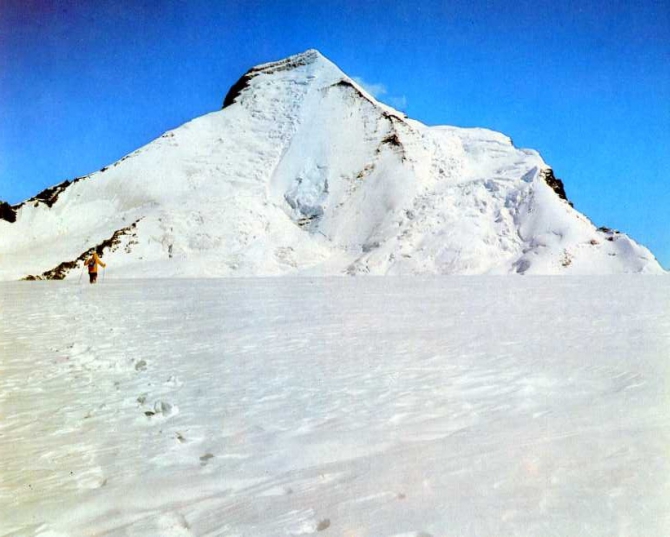
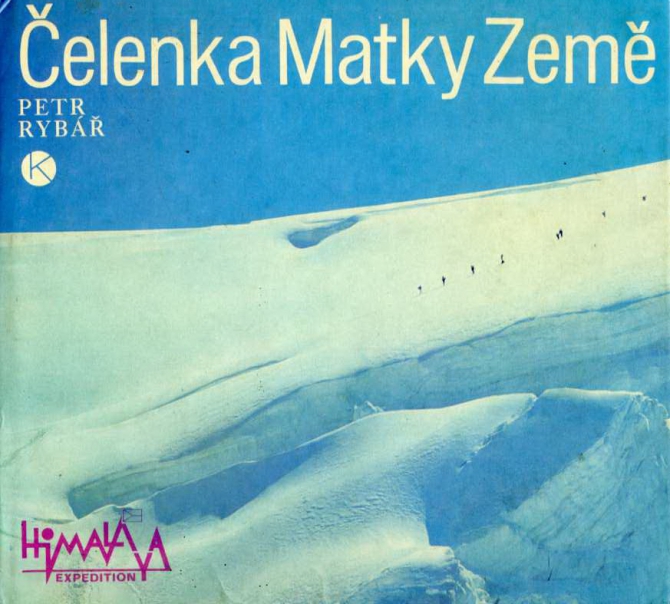
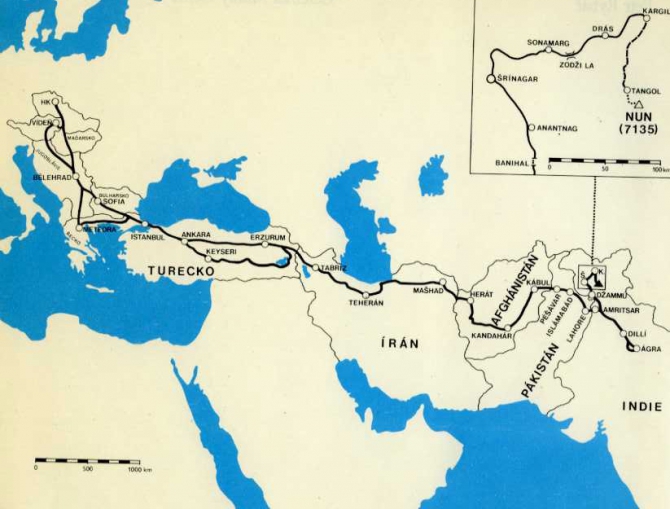
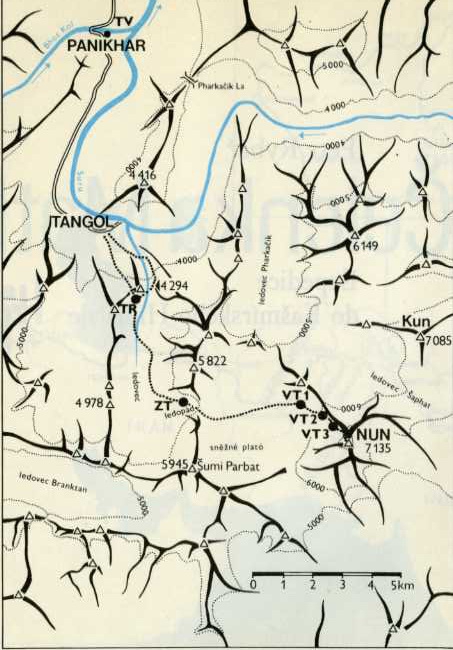
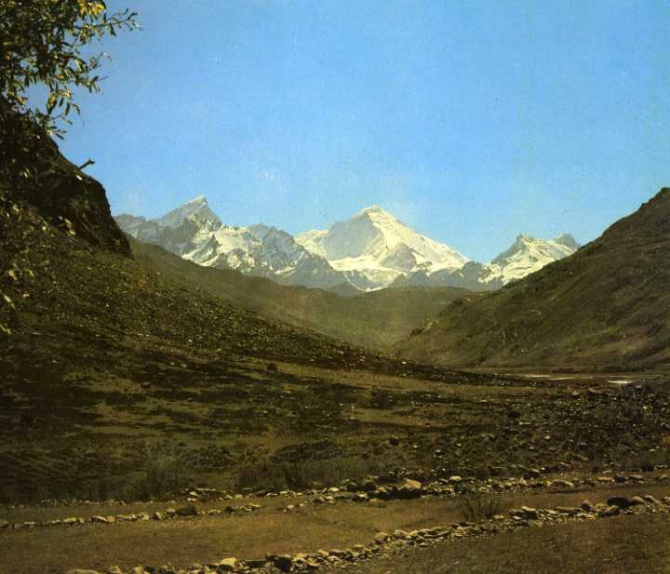
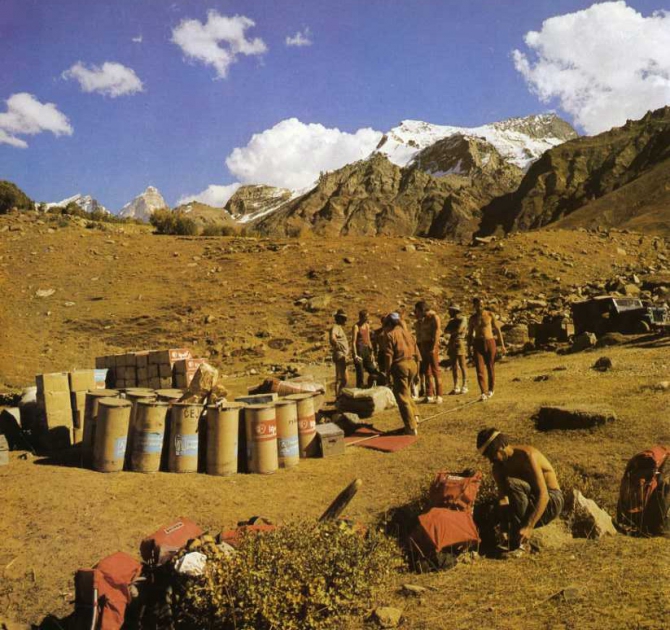
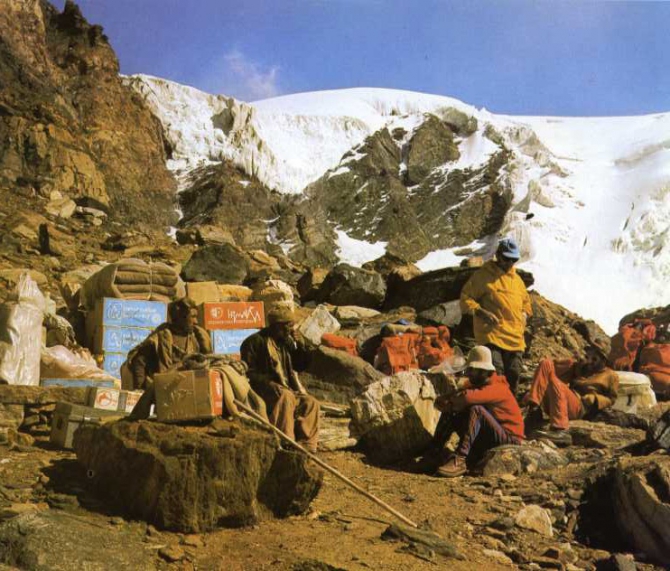
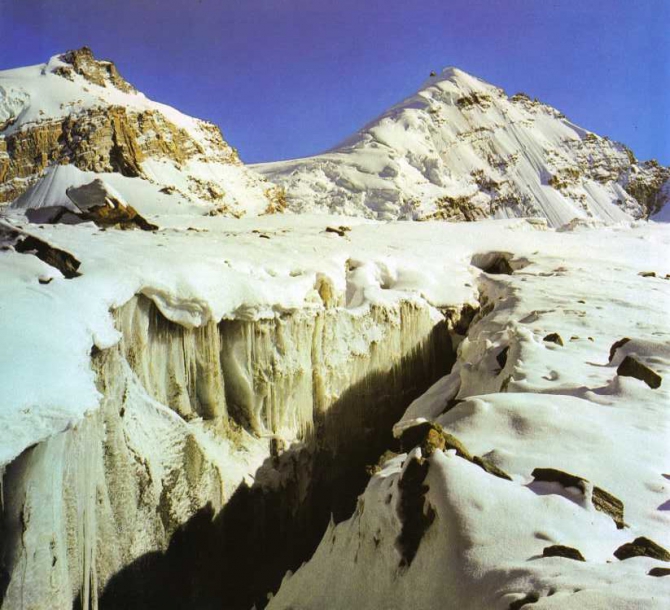
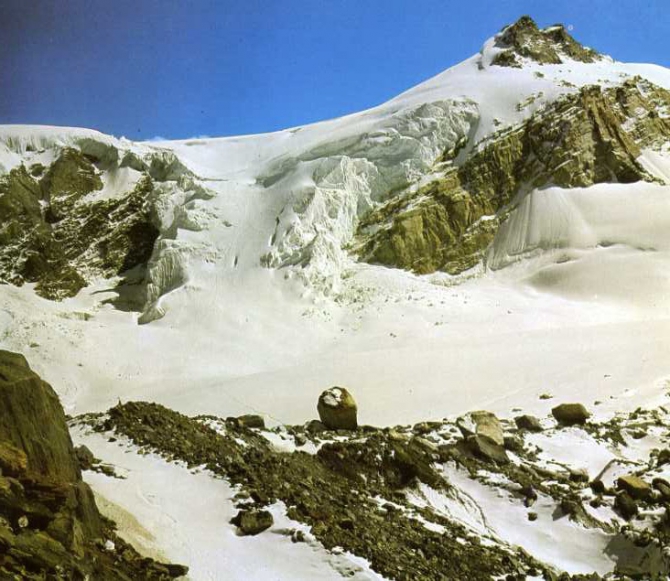
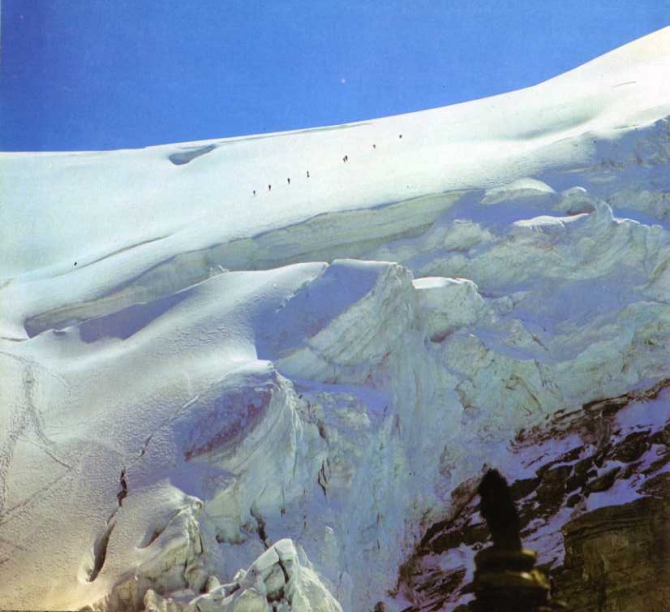
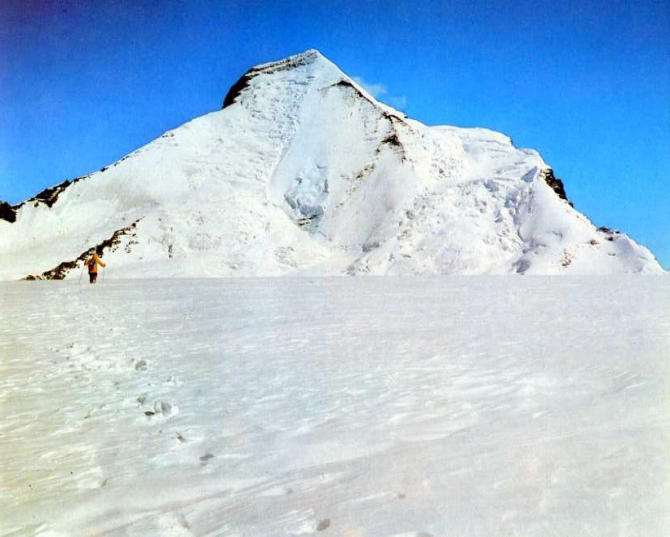
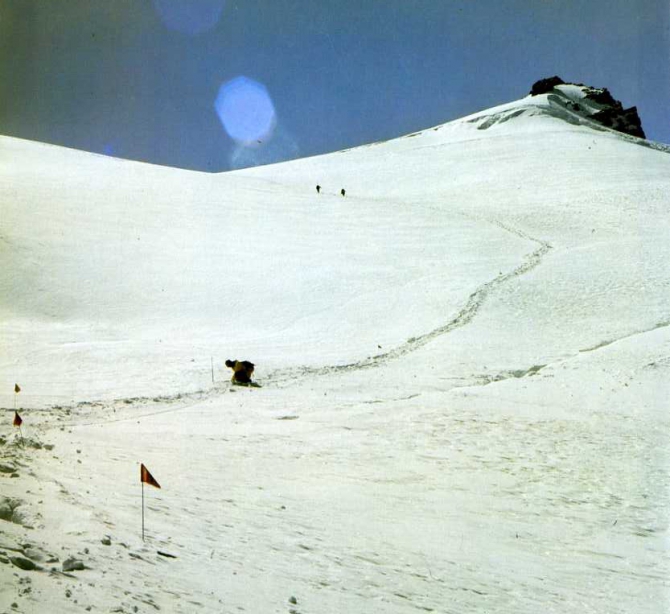
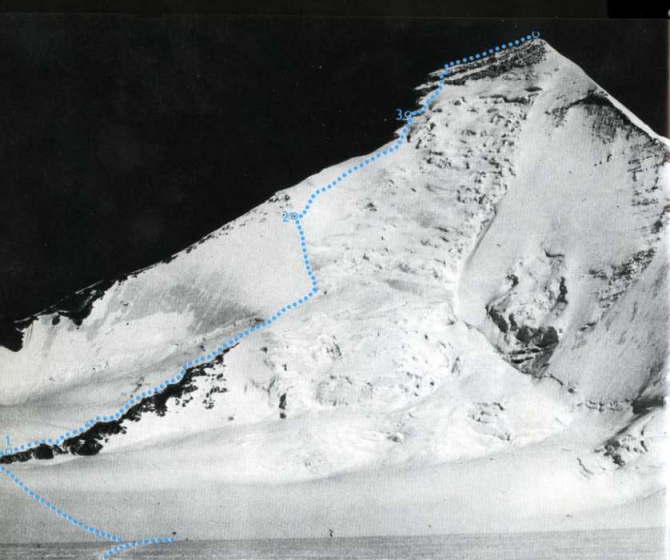
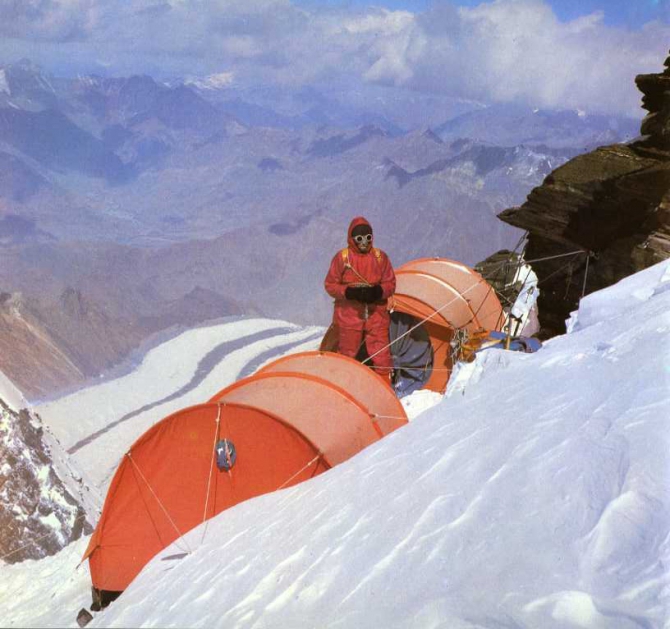
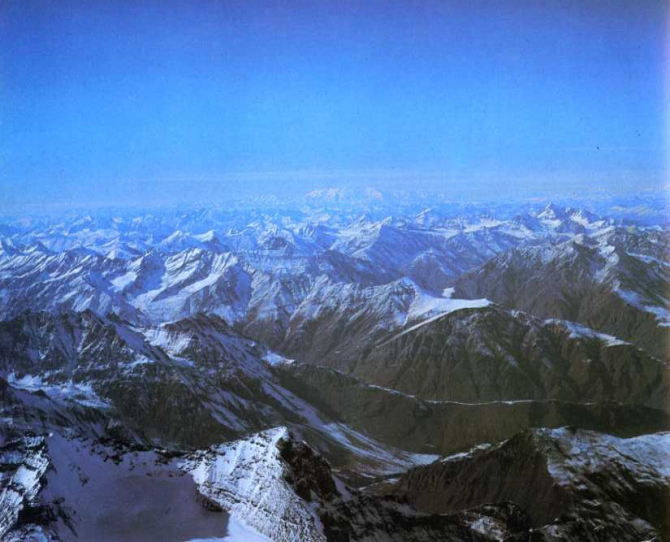
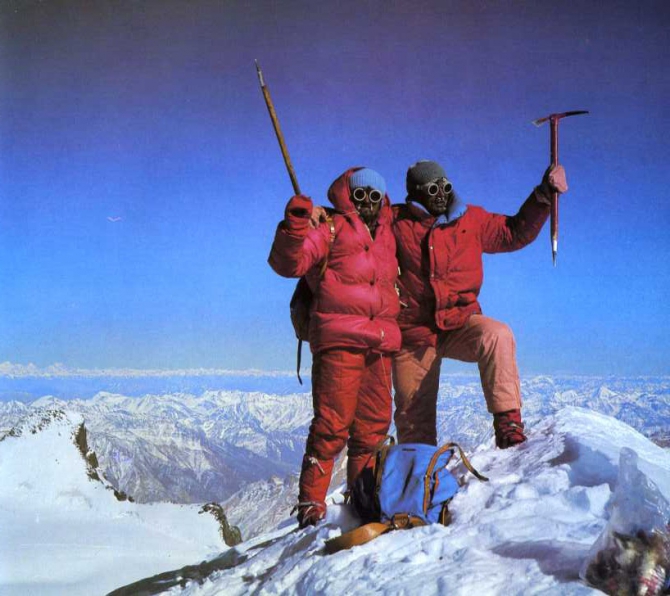
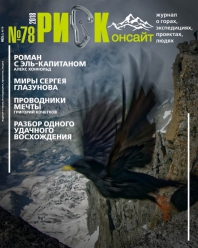
Первовосхождение было осуществлено японцами в 1962 году по восточному склону и юго-восточному гребню (E Face & SE Ridge), вот ЗДЕСЬ это описано так:
Saltoro Kangri. The Academic Alpine Club of Kyoto, Kyoto University,
sent an expedition under the leadership of Dr. Tsunahiko Shidei to join
the Korakoram Club of Pakistan, Taian Kato, Dr. Kazuhiko Hayashi, Dr.
Atsuo Saito, Kazumasa Hirai, Yatuka Tani, Goro Iwatsubo, Yasuo Takamura,
Schoichiro Uyeo and Tadashi Maegoya were the Japanese members.
Professor H. A. Beg was the leader and H. A. Khan, R. Bashir and P. A.
Khan were the members of the Pakistani group, Captain B. A. Bashir was
liaison officer. Leaving Skardu at the end of May, we placed Base Camp
near Ali Branza at the head of the Bilafond Glacier. It took more than 20
days to cross the Bilafond La (18,000 feet) and to set up Advance Base
Camp at the junction of the Slachen and the Peak 36 glaciers, aided by
ten high-altitude porters and thirty local men. Camp I in the Peak 36
Glacier and Camp II at the foot of the north wall of Saltoro Kangri were
established by the beginning of July, We started climbing in mid-July,
and Camps III, IV and V were set up at 20,000, 21,500 and 23,650 feet
respectively. Following the route which was taken by Sir John Hunt in
1935, we used some rope ladders on ice walls just below Camp III. We
had much bad weather and snowfall there, and the Japanese snowshoes
were very helpful in the steep, deep snow. The assault team, Dr. Saito,
Takamura and R. Bashir, left Camp V for the summit early on July 23.
They did not have great difficulties, but the continuous slope of deep snow
did not allow them to reach the summit that day. At 24,500 feet near the
“Gendarme” and about one mile from the top, they had to spend the
night in a bivouac sack without sleeping bags and mattresses. It was also
fine on the 24th and they started again at 2:30 A.M. After seven hours of
struggling with deep snow, they climbed a shallow ice gully which led to
the final ridge and at last trod the summit at 10:45. They radioed the news
from the summit to all other members and descended to Camp V on the
same evening to join their support party.
DR. TSUNAHIKO SHIDEI, Academic Alpine Club of Kyoto.
Второй маршрут был проложен уже индусами также с востока (из Индии) по линии Джона Ханта (E Face (John Hunt's 1936 line)). ВотЗДЕСЬ описано это восхождение вот в таких предложениях:
Indira Cal, Sia Kangri and Saltoro Kangi. (Editor’s Note: Although
this is placed under Pakistan, one must bear in mind that this is disputed
territory and is considered India by Indians.) After driving to Panamik,
the Indian Army Eastern Karakoram Expedition hired ponies which
took us to Base Camp near the snout of the Siachen Glacier. This
journey of 50 miles was made in four days. Another four days’ journey
took us to the junction of the Siachen and Lolofond Glaciers. Our next
camp was placed where the Saltoro Glacier meets the Siachen. The
next two were established east of the Sia La in the center of the Siachen
Glacier and near a glacial lake. From there on June 29 A.C. Chopra,
D.K. Duarah, Des Raj, Sonam Lingzen, Vinod Kumar and I skied up
to the ridge and then traversed to 19,000-foot Indira Co1 on the divide
between central Asia and the Indian subcontinent. We also skied to the
following passes: Turkistan La, Bilafond La, Sia La and the gap between
the Peak 36 Glacier and the South Dong Dong Glacier. Camps
I, II, III and IV for Sia Kangri were established at 17,800 feet on
June 24, two kms northeast of Sia La at 19,000 feet, on the co1 just above
the Kondus Glacier opposite Conway Co1 at 20,600 feet on July 3 and
on the western slopes of the Sia Kangri massif respectively. The team
had to negotiate a small icefall. On July 13 an attempt on the summit
fell 600 feet short, but the party, Chopra, K.D. Shelley, Suli Mao and
Chhering Mutup climbed a lower peak of about 24,000 feet (7315
meters) south of the great main plateau, probably first climbed by
Dyhrenfurth in 1934. On July 14, Y.S. Pathania, Des Raj, Vinod
Kumar, Dujman Rana and I reached the summit of Sia Kangri (7422
meters, 24,350 feet) at 2:45 P.M. On Saltoro Kangri we followed the
route attempted in 1936 by John Hunt. Camp I was placed at 17,600
feet on the Peak 36 Glacier on June 30. Camp II was established
below the eastern face of Saltoro I at 19,000 feet on July 5. After overcoming
an overhanging section, Camp III was placed at 21,000 feet
on July 10. Camp IV at 22,500 feet was established on July 13 after
crossing a treacherous overhanging ice wall. We placed Camp V at
23,400 feet on July 14 just below the southeast ridge and made an
unsuccessful assault on July 15 to within 400 feet of the top. On July
18 and 19, heavy avalanches obliterated the route to Camp IV and
slopes above Camp IV peeled off to bury the camp deep under snow. A
second team finally remade the route to Camp IV. On August 1 Kalam
Singh, Gaj Bahadur, Chhering Tondup and Swarn Singh, supported by
nine others, went straight from Camp III to Camp V, as Camp IV was
considered too dangerous. It was a marathon climb! On August 2 they
got to the summit (7742 meters, 25,400 feet). All were back in Base
Camp by August 15.
NARINDAR KUMAR, Colonel, Indian Army
надеюсь, "салторовцы" это прочтут.
Я читал, что AAJO открыл свои архивы для доступа, но войти не могу, комп. сразу глючит, и по Вашей ссылке не заходится. Ну, это внутренние проблемы:-)
Что касается Салторо, то там всё гораздо интереснее и неоднозначнее, чем я тут написал. Но по-моему, это дело "Салторовцев" изучить историю горы и рассказать нам всем о ней.
От прочтения в салторовском проекте фразы
"цель проекта: Первовосхождение в «альпийском стиле» (двойка) на одну из высочайших непокорённых вершин мира Saltoro Kangri (7705 м) в трудноступном районе Siachen Glacier"
до написания комментария с цитатами из AAJ не прошло и 10 минут. Надо чуть-чуть в интернете пальчиками пощелкать и всё ок!
На самом деле ситуация в плане первовосхождения не безнадежная. Есть нюансы. Но теперь пусть они пальчиками пощелкают и повыявляют эти нюансы.